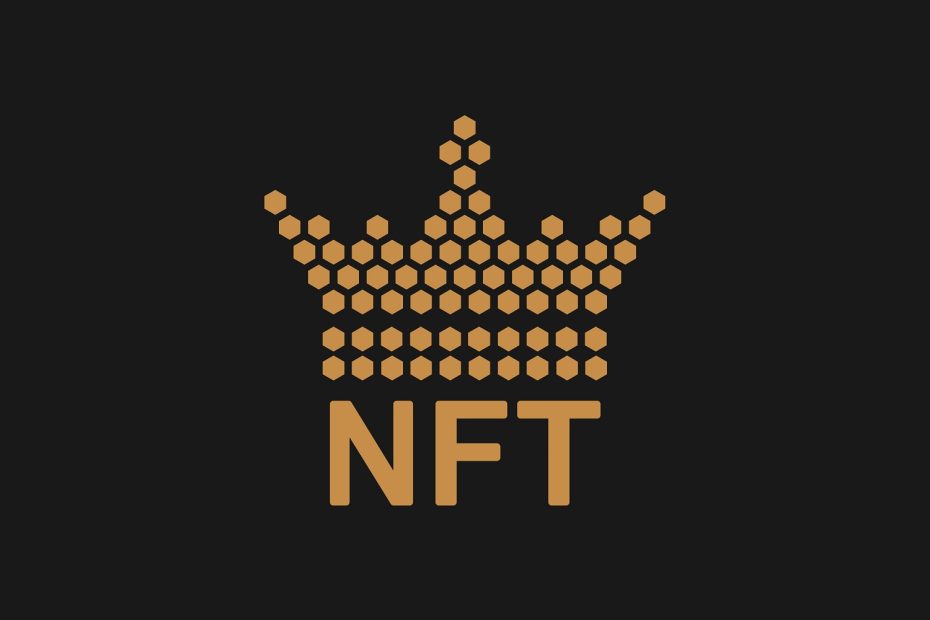Imagine a world where every stroke of your brush, every pixel you place, and every piece of art you create not only stands out as unique but also serves as a lasting source of income. Welcome to the new age of digital art, where Non-Fungible Tokens (NFTs) and perpetual royalties are rewriting the rules of the game. This revolution is not just a fleeting trend; it’s an empowerment movement providing artists with both recognition and financial compensation that continues long after the initial sale. In this article, we will delve into the transformative world of NFTs and how they are facilitating a new compensation model—perpetual royalties—that promises to benefit artists like never before.
What Are NFTs?
Non-Fungible Tokens, or NFTs, are digital assets that exist on a blockchain, similar to cryptocurrencies like Bitcoin and Ethereum. However, unlike these cryptocurrencies, NFTs are unique and cannot be exchanged on a one-to-one basis, which makes them non-fungible. This uniqueness allows artists to tokenize their artwork, thereby converting them into digital assets with verified ownership and provenance. This is a paradigm shift from traditional digital art and assets, which were easily replicable and lacked a mechanism to prove originality or ownership. With NFTs, not only can artists assert their rights over their work, but collectors can also prove their ownership of a unique piece of art.
Understanding Perpetual Royalties
So, what exactly are perpetual royalties, and how do they set themselves apart from the traditional royalties we are accustomed to? In the conventional art world, artists might get compensated through royalties each time their work is reproduced, such as in prints or merchandise. However, these royalties often come with limitations—they are usually limited to certain types of reproductions and may eventually stop after a fixed number of years or cycles. In the realm of NFTs, perpetual royalties are a game-changer. Artists can set up smart contracts that automatically allocate a percentage of any future sale back to them. In other words, every time the NFT changes hands, artists get their share, perpetually. This is radically different from traditional royalties, providing a lifelong revenue stream for artists without complicated legal agreements or limitations.
The Revolution in Digital Art Compensation
If there ever was a seismic shift in the way artists are compensated for their work, it’s happening now with the advent of NFTs and perpetual royalties. Traditional avenues of making money through art—such as gallery sales, commissions, or merchandise—often presented a host of challenges, including middlemen, high fees, and one-time payments. NFTs have turned the tables, democratizing access to art and enabling artists to receive ongoing compensation through perpetual royalties. With NFTs, artists can code smart contracts that ensure a percentage of any resale goes directly back to them. This isn’t just theoretical; real-world examples of artists benefiting from this model are mounting every day.Take the case of digital artist Beeple, whose NFT art sold for $69 million. Due to the smart contracts attached to his artwork, Beeple will continue to earn a percentage every time the art is resold. This ongoing compensation model is revolutionary and levels the playing field for both emerging and established artists, ensuring their artistic contributions are perpetually rewarded.
Minting Your First Art NFT with Perpetual Royalties
So, you’re intrigued by the idea of earning ongoing income through your art, and you’re ready to dive into the world of NFTs. What’s the next step? Minting your first Art NFT with perpetual royalties is not as complicated as you might think, and many platforms can guide you through it. Here’s a step-by-step guide:
- Choose a Platform: Start by selecting a platform that supports NFTs with perpetual royalties. Platforms like OpenSea, Rarible, and Foundation offer this feature.
- Connect Your Wallet: Before you can mint an NFT, you’ll need to connect a digital wallet to your chosen platform. MetaMask is a popular choice.
- Upload Your Art: Follow the on-screen prompts to upload your digital art. This could be anything from a JPEG to a GIF, or even an MP4 video.
- Set Up Perpetual Royalties: During the minting process, you’ll have the option to set up perpetual royalties. You can specify the percentage you wish to earn from future resales.
- Mint the NFT: Once everything looks good, go ahead and mint your NFT.
- List it for Sale: After minting, you can list your NFT for sale on the platform’s marketplace.
Congratulations, you’ve just minted your first Art NFT with perpetual royalties!
Top 7 Platforms for Minting Art NFTs with Perpetual Royalties
Navigating the myriad of platforms available for minting NFTs can be daunting. So, to save you some time, we’ve compiled a list of the top 7 platforms that offer perpetual royalties:
- OpenSea: This platform is one of the largest NFT marketplaces and supports various types of digital assets. Pros include its user-friendly interface and extensive community. Cons are the high gas fees during peak times.
- Rarible: Known for its governance token “RARI,” Rarible offers artists the ability to earn tokens as they transact. However, the platform has a smaller user base compared to others.
- Foundation: Focused on digital art, Foundation has made a name for its artist-first approach. The downside is its exclusivity; you need an invite to start minting.
- SuperRare: This platform specializes in single-edition digital artworks. While it has a strong reputation, the platform is tailored more for established artists.
- Zora: Zora allows artists to capture more value by dynamically pricing their work. However, the platform has a steeper learning curve.
- Mintable: User-friendly and gas-free, Mintable is an excellent option for those new to the NFT world. The platform, however, lacks some advanced features.
- Cargo: Known for its low minting fees, Cargo is an underrated but powerful platform for creating NFTs. The primary drawback is its smaller community.
By understanding these platforms’ features, pros, and cons, you can make an informed decision about where to mint your Art NFTs with perpetual royalties. The choice ultimately depends on your specific needs and what you prioritize most, be it fees, user base, or additional features.
Ethical and Environmental Aspects
The Ethical Implications of Perpetual Royalties
While NFTs offer an unprecedented way for artists to secure ongoing income through perpetual royalties, this new paradigm isn’t without ethical considerations. For instance, how do these royalties impact the valuation of art and the behavior of collectors? Some critics argue that perpetual royalties could discourage long-term investment in art. If collectors know they’ll have to pay a percentage to the original artist with each resale, will that limit the art’s liquidity in the marketplace? Additionally, there’s the question of originality. With digital art, how do we differentiate between the artist’s intent and potential copyright infringement issues? Artists and buyers alike need to tread carefully in this evolving landscape.
The Environmental Footprint of NFTs
Then, there’s the environmental impact. Blockchains like Ethereum, commonly used for minting NFTs, are notorious for their high energy consumption. This has led to criticism from environmentalists who argue that the NFT boom contributes to climate change. However, solutions are on the horizon. Ethereum 2.0, for example, aims to shift from a power-hungry “proof of work” model to a more efficient “proof of stake” model. Additionally, some platforms are exploring eco-friendly blockchains as a more sustainable alternative for minting NFTs.
Some FAQs Answered About Navigating Perpetual Royalties in the NFT Art World
How do I set up perpetual royalties for my NFT art?
Setting up perpetual royalties is usually a feature integrated within the NFT minting process on platforms like OpenSea, Rarible, and Foundation. You can specify the percentage you’d like to receive during each resale.
Is it legal to earn from perpetual royalties?
Yes, it is legal to earn from perpetual royalties as long as you are the original creator of the artwork. The smart contract you set up during the minting process will handle this automatically.
Can I change the percentage of royalties after minting?
The answer to this varies depending on the platform, but generally speaking, once a royalty rate is set in a smart contract, it cannot be changed. Always double-check before minting.
How do I receive my earnings?
Your earnings from perpetual royalties are usually paid in cryptocurrency and sent to your connected digital wallet automatically upon resale.
What happens if my art is plagiarized?
If your art is plagiarized and minted as an NFT by someone else, you may have legal recourse. However, tracking down infringers in the decentralized world of blockchain can be complex.
In Conclusion, navigating the world of NFTs and perpetual royalties can be complex, but the rewards are revolutionary. This new age of digital art compensation offers a sustainable income model that benefits artists directly, thereby altering the financial dynamics of the art world in a profound way. Although there are ethical and environmental hurdles to overcome, ongoing innovations and platform choices make it an exciting landscape to explore. Therefore, artists interested in maximizing their earning potential should strongly consider venturing into the realm of NFTs and perpetual royalties as a viable financial strategy.

Eric Dalius is The Executive Chairman of MuzicSwipe, a music and content discovery platform designed to maximize artist discovery and optimize fan relationships. In addition, he hosts the weekly podcast “FULLSPEED,” where he interviews innovative entrepreneurs across multiple industries. Eric also established the “Eric Dalius Foundation” to provide four scholarships for US-based students. Connect with him on Twitter, Facebook, LinkedIn, Instagram, and Entrepreneur.com.
